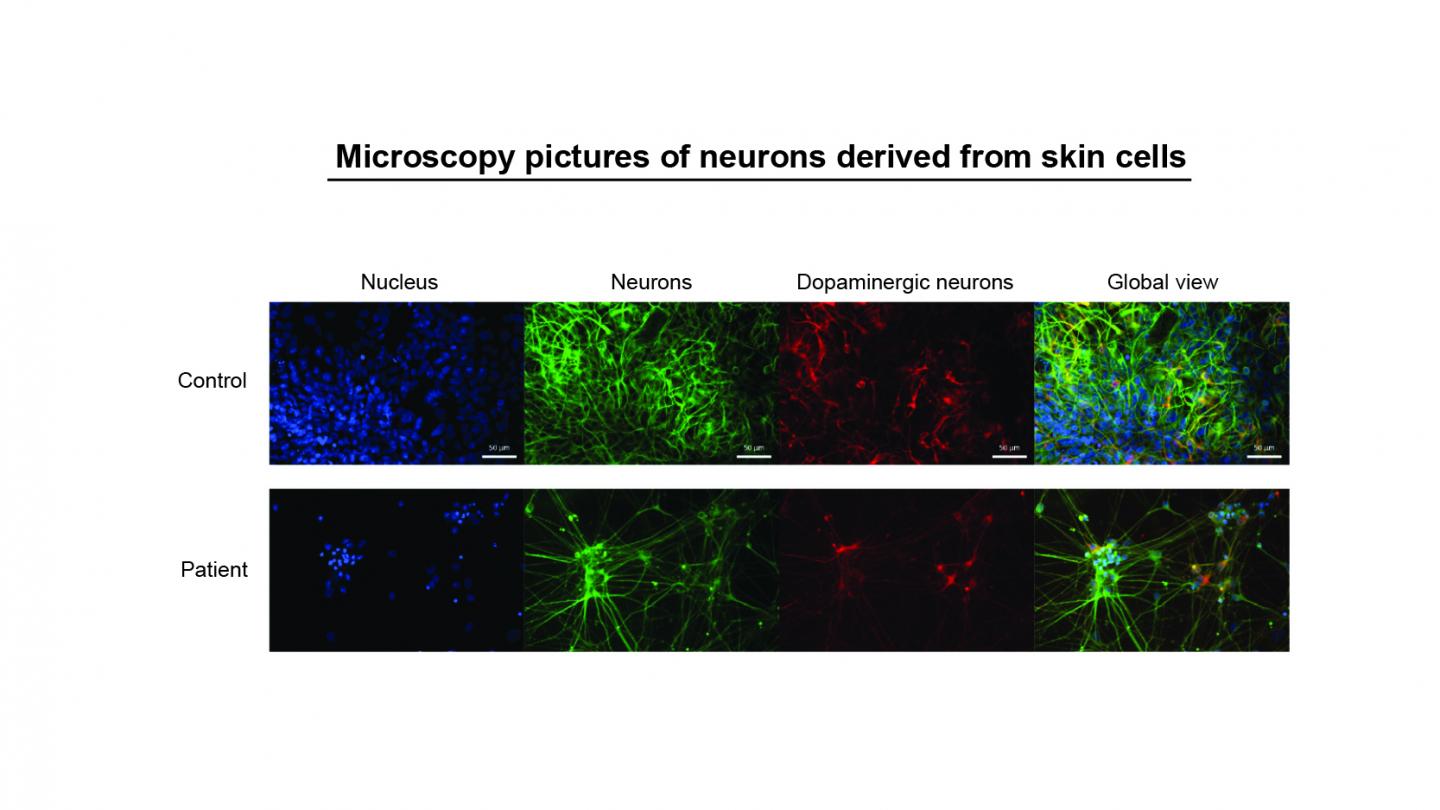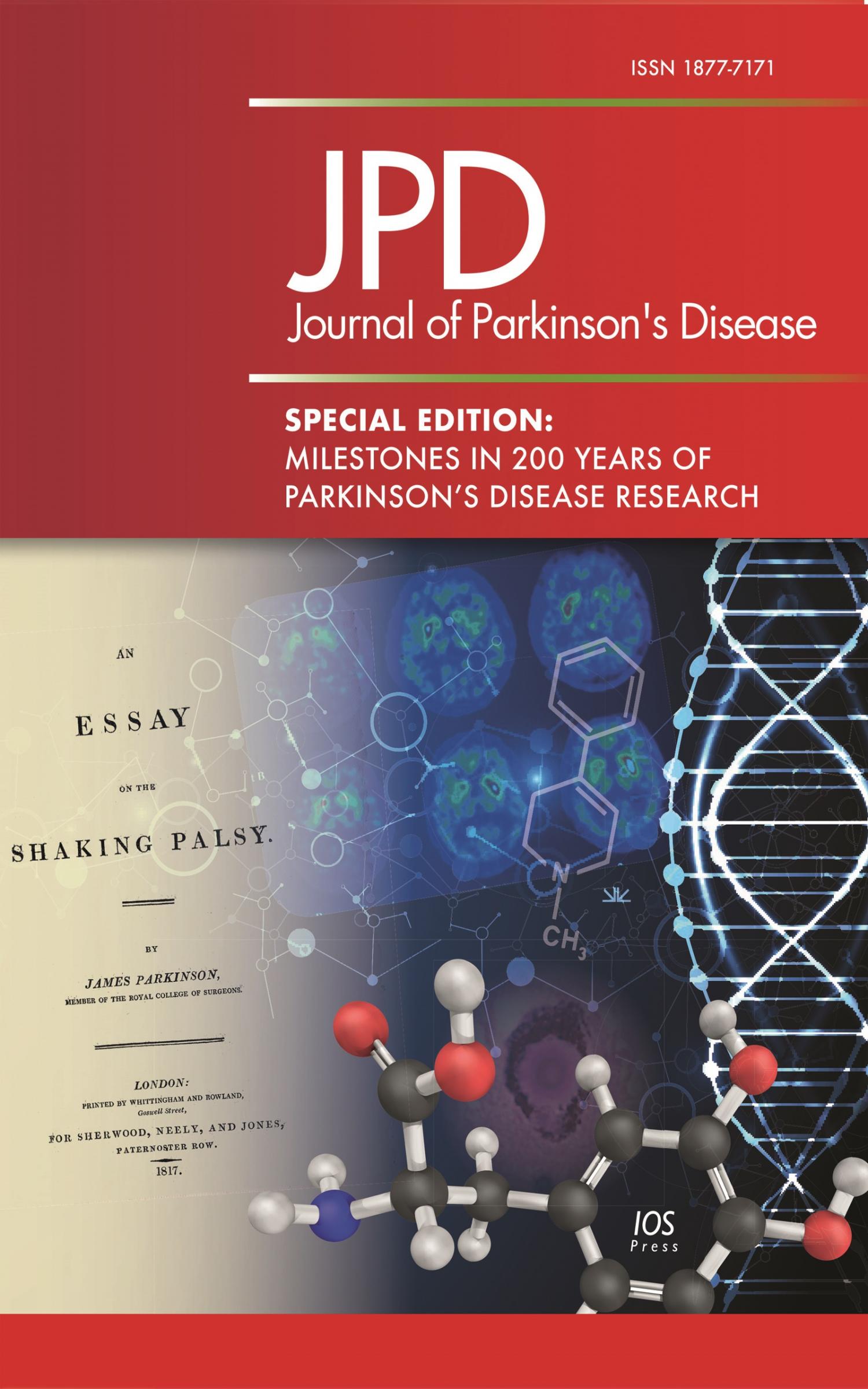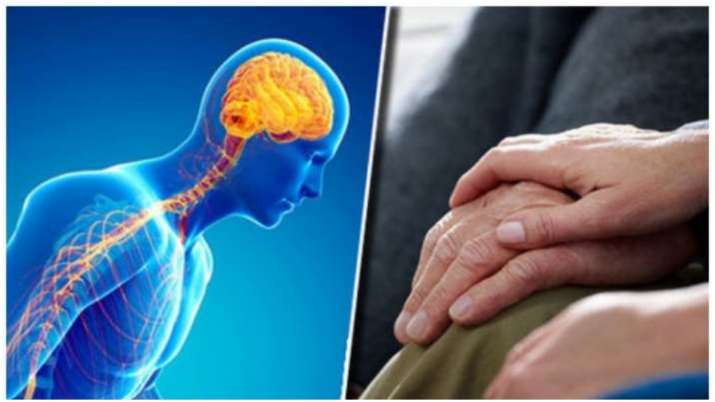How Could Stem Cells Help People With Parkinson’s
Stem cells are the parent cells of all tissues in the body. This means they can turn into any type of cell. The hope is that they will eventually be able to make these cells into specific types of cells, like dopamine-producing neurons, that can be used to treat Parkinson’s disease. However, there are concerns that patients may have the same risk of increased involuntary movements as those who undergo fetal cell transplantation. And, like fetal cell transplantation, stem cell therapy is surrounded by moral and ethical controversy.
A Clinical Study Of Nly01 In Patient’s With Early Parkinson’s Disease
open to eligible people ages 30-80
This is a phase 2 study designed to assess the safety, tolerability and efficacy of NLY01 in subjects with early untreated Parkinson’s disease . Evidence suggests NLY01, a pegylated form of exenatide, may be beneficial in PD and is being developed as a potential treatment for neurodegenerative disorders. For more information, please visit: PrismPDstudy.com
San Francisco, California and other locations
Connections Between Parkinsons And Dementias
The average life expectancy for people with Parkinsons has increased. So we have seen more cases where the progression of the disease leads to cognitive impairment or dementia. Understanding the connection between the motor symptoms and neurodegenerative properties of the disease is a crucial next step in research. That may be the biggest unmet need right now, says Dr. Stern, Therapies to prevent that from occurring.
Those cognitive issues also highlight the similarities or connections between Parkinsons disease dementia and other dementias. Theres a spectrum between Alzheimers disease and Parkinsons dementia, and often the pathologies coexist, Dr. Stern says. In many instances, we find the changes of Alzheimers disease in Parkinsonian brains. This overlap makes it difficult to make an accurate diagnosis while a person is alivebut it also means a breakthrough for one disease could lead to a breakthrough for the other.
New research is exploring how to better distinguish between these degenerative brain diseases. One area of study focuses on the ability to pick up very small amounts of alpha-synuclein in the blood or spinal fluid. While this type of testing is not ready for clinical use yet, Dr. Stern says it may be available soon.
The American Brain Foundation is committed to finding cures for brain diseases. Donate today to make a difference. With your help, we wont have to imagine a life without brain disease well be able to live in one.
Recommended Reading: Does Sam Waterston Have Parkinsons
What Genes Are Linked To Parkinsons Disease
Several genes have been definitively linked to PD:
- SNCA. This gene, which makes the protein alpha-synuclein, was the first gene identified to be associated with Parkinsons. Research findings by the National Institutes of Health and other institutions prompted studies of the role of alpha-synuclein in PD, which led to the discovery that Lewy bodies seen in all cases of PD contain clumps of alpha-synuclein. This discovery revealed the link between hereditary and sporadic forms of the disease.
- LRRK2. Mutations in LRRK2 were originally identified in several English and Basque families as a cause of a late-onset PD. Subsequent studies have identified mutations of this gene in other families with PD as well as in a small percentage of people with apparently sporadic PD. LRRK2 mutations are a major cause of PD in North Africa and the Middle East.
- DJ-1. This gene normally helps regulate gene activity and protect cells from oxidative stress and can cause rare, early forms of PD.
- PRKN . The parkin gene is translated into a protein that normally helps cells break down and recycle proteins.
- PINK1. PINK1 codes for a protein active in mitochondria. Mutations in this gene appear to increase susceptibility to cellular stress. PINK1 has been linked to early forms of PD.
- GBA . Mutations in GBA cause Gaucher disease , but different changes in this gene are associated with an increased risk for Parkinsons disease as well.
A Clinical Trial Investigating The Efficacy Safety And Tolerability Of Continuous Subcutaneous Nd0612 Infusion In Comparison To Oral Ir

open to eligible people ages 30-80
This is a multi-center, randomized, double blind, active controlled clinical Study. Following a screening period, eligible subjects will be enrolled to an open-label oral IR LD/CD adjustment period then an open-label ND0612 conversion period then after optimization periods subjects will be randomized to receive either ND0612 or its matching Placebo with IR LD/CD. Subjects can continue to an optional open-label extension period for one year To contact US site near you should go to: www.BouNDless-Study.com
San Francisco, California
You May Like: Voice Amplifiers For Parkinson’s
Complementary And Supportive Therapies
A wide variety of complementary and supportive therapies may be used for PD, including:
A healthy diet. At this time there are no specific vitamins, minerals, or other nutrients that have any proven therapeutic value in PD. The National Institute of Neurological Disorders and Stroke and other components of the National Institutes of Health are funding research to determine if caffeine, antioxidants, and other dietary factors may be beneficial for preventing or treating PD. A normal, healthy diet can promote overall well-being for people with PD just as it would for anyone else. Eating a fiber-rich diet and drinking plenty of fluids also can help alleviate constipation. A high protein diet, however, may limit levodopas absorption.
Exercise. Exercise can help people with PD improve their mobility, flexibility, and body strength. It also can improve well-being, balance, minimize gait problems, and strengthen certain muscles so that people can speak and swallow better. General physical activity, such as walking, gardening, swimming, calisthenics, and using exercise machines, can have other benefit. People with PD should always check with their doctors before beginning a new exercise program.
Alternative approaches that are used by some individuals with PD include:
Nerve Damage Seen In Skin Can Predict Parkinsons Progression
In Parkinsons patients, greater nerve damage in the skin around the ankle is significantly associated with subsequent progression of motor symptoms, while the presence of such damage in neck skin is linked to progressive cognitive decline, a study shows. Notably, this nerve damage progression was not related to increased
You May Like: Does Vitamin B12 Help Parkinson’s
What Is Fetal Cell Transplantation
Fetal cell transplantation is a procedure in which fetal cells are implanted into the brains of people with Parkinson’s disease to replace the dopamine-producing cells in the substantia nigra. Although promising, this area of research is one of the most controversial. Some studies have found that fetal cell transplantation caused an increase in severe involuntary movements due to too much dopamine in the brain. There are also moral and ethical objections to the use of fetal cell implants. As a result, other methods of treatment are being explored.
Establishing Pd Research Priorities
The NINDS-organized Parkinsons Disease 2014: Advancing Research, Improving Lives conference brought together researchers, clinicians, patients, caregivers, and nonprofit organizations to develop 31 prioritized recommendations for research on PD. These recommendations are being implemented through investigator-initiated grants and several NINDS programs. NINDS and the NIHs National Institute of Environmental Health Sciences held the Parkinsons Disease: Understanding the Environment and Gene Connection workshop to identify priorities for advancing research on environmental contributors to PD.
Research recommendations for Lewy Body Dementia, including Parkinsons disease dementia, were updated during the NIH Alzheimers Disease-Related Dementias Summit 2019 .
Also Check: Fitflop Shoes For Parkinson’s
What New Treatments Are Being Developed
Thanks to the progress we’ve already made, new treatments are being tested in clinical trials that have the potential to slow, stop or even reverse Parkinson’s.
These include:
- stem cell therapies, which aim to use healthy, living cells to replace or repair the damage in the brains of people with Parkinson’s
- gene therapies, which use the power of genetics to reprogramme cells and change their behaviour to help them stay healthy and work better for longer
- growth factors , which are naturally occurring molecules that support the growth, development and survival of brain cells.
And we’re developing treatments that aim to improve life with the condition, including new drugs that can reduce dyskinesia.
The Motor Network In Parkinson’s Disease And Dystonia: Mechanisms Of Therapy
open to eligible people ages 21-75
This is an exploratory pilot study to identify neural correlates of specific motor signs in Parkinson’s disease and dystonia, using a novel totally implanted neural interface that senses brain activity as well as delivering therapeutic stimulation. Parkinson’s disease and isolated dystonia patients will be implanted unilaterally or bilaterally with a totally internalized bidirectional neural interface, Medtronic Summit RC+S. This study includes three populations: ten PD patients undergoing deep brain stimulation in the subthalamic nucleus , ten PD patients with a globus pallidus target and five dystonia patients. All groups will test a variety of strategies for feedback-controlled deep brain stimulation, and all patients will undergo a blinded, small pilot clinical trial of closed-loop stimulation for thirty days.
San Francisco, California
You May Like: Similar To Parkinsons
New Research Explores The Possibilities Biomarkers Offer In Early Detection Accurate Diagnosis And Effective Treatment For Parkinsons Disease
Parkinsons disease affects nearly 1 million people in the United States. We expect that number to grow to 1.2 million by 2030. In our recent webinar, Matt Stern, MD, a renowned expert in the field of Parkinsons disease, shared updates on the current state of Parkinsons research. He also discussed ongoing research and new discoveries that offer hope for people suffering from Parkinsons and other neurodegenerative diseases.
Dr. Stern is a professor of neurology, co-founder of the Parkinsons Disease and Movement Disorder Center at the University of Pennsylvania, and founding director of the Parkinsons Disease Research, Education and Clinical Center at the Pennsylvania VA Medical Center.
Copper Leads To Protein Aggregation In Parkinson’s Disease

by Rainer Klose, Swiss Federal Laboratories for Materials Science and Technology
Copper exposure in the environment and the protein alpha-synuclein in the human brain could play an important role in the pathogenesis of Parkinson’s disease. A team from Empa and the University of Limerick was able to show how the protein forms into an unusual shape when exposed to large amounts of copper ions. Published in ACS Chemical Neuroscience, the findings could help develop new strategies for the treatment of neurodegenerative diseases.
The causes of Parkinson’s disease are not yet fully understood. Long before the onset of the typical muscle tremor, the appearance of defective proteins in the brain could be a first sign. Researchers at Empa and the University of Limerick in Ireland have now taken a closer look at the abnormal shape of these alpha-synucleins in the form of protein rings. In doing so, they were also able to visualize at the nanoscale the connection with environmental pollution by copper. This sheds new light on the development of the neurodegenerative disease and the role of biometals in the disease process. In addition, the findings could provide opportunities to improve early detection and therapy of the disease.
Suspicious metal
Rings of evil
Early testing
Explore further
Also Check: Prayer For Parkinson’s Disease
Common Scale Of Motor Symptom Severity May Have Flaws: Study
A commonly used measure of how motor symptoms are affecting daily life could also for people in early stages of Parkinsons disease be taking into account the contribution of their non-motor symptoms, a study suggests. This is a likely reason for the discrepancies seen in evaluations made by patients
Chronic Effects Of Dbs In Parkinson’s Disease And Dystonia
Sorry, in progress, not accepting new patients
The purpose of this study is to use an investigational device to record brain activity for 12-24 months following surgical implantation of deep brain stimulation systems. The goal of the study is better understanding of brain activity in movement disorders and how they relate to DBS, not to bring new devices to market.
San Francisco, California
Sorry, in progress, not accepting new patients
This study will investigate cortical stimulation to treat mood and behavioral symptoms in Parkinson’s disease patients.
San Francisco, California
You May Like: On-off Phenomenon
How Can People Cope With Parkinson’s Disease
While PD usually progresses slowly, eventually daily routines may be affectedfrom socializing with friends to earning a living and taking care of a home. These changes can be difficult to accept. Support groups can help people cope with the diseases emotional impact. These groups also can provide valuable information, advice, and experience to help people with PD, their families, and their caregivers deal with a wide range of issues, including locating doctors familiar with the disease and coping with physical limitations. A list of national organizations that can help people locate support groups in their communities appears at the end of this information. Individual or family counseling may also help people find ways to cope with PD.
People with PD may also benefit from being proactive and finding out as much as possible about the disease in order to alleviate fear of the unknown and to take a positive role in maintaining their health. Many people with PD continue to work either full- or part-time, although they may need to adjust their schedule and working environment to accommodate their symptoms.
Icipate In A Research Study
Many research studies into Parkinson’s disease need human volunteers to answer specific health questions. Your participation in these research studies allows you to access new treatments for Parkinson’s disease before they are widely available and contributes to medical research.
You May Like: Parkinson’s Bike Therapy
The Future Of Parkinsons Diagnosis
Right now, a Parkinsons diagnosis is often based on observable symptoms. These observations may be supported by a dopamine scan, sometimes called a DaTscan. Thats because many of the motor symptomslike tremor, slowness of movement, and muscle rigidityare linked to a deficiency in the neurotransmitter dopamine. This scan can show abnormalities in the transmission of dopamine in the brain. So it may be an effective early screening tool.
In the study that we just published last year, we used the DaTscan and smell testing as our screening tool, says Dr. Stern. They found that two-thirds of people who had an abnormality in their DaTscan would go on to develop Parkinsons disease, even if they had no symptoms at the time of the scan.
Researchers are also looking into whether Parkinsons has different subtypes, which Dr. Stern says has the potential to revolutionize diagnosis and treatment. Diagnostic tools in the past were very limited. So he questions how many people have been misdiagnosed based on symptoms that outwardly present as Parkinsons. Because of genetic variability, there were probably a lot of syndromes that we didnt quite recognize that included what looked exactly like Parkinsons disease and responded to therapy like Parkinsons disease, says Dr. Stern.
Early Detection Of Parkinsons Disease
Parkinsons disease affects about 1% of the population, primarily people in their late 50s and 60s. It is marked by tremor, slowness of movement, and muscle rigidity. Additional symptoms include gait and balance difficulties, speech issues, and bowel and bladder problems.
Dr. Stern noted how far the treatment of Parkinsons disease has come since he first started working in the field. The good news is were very effective now at being able to treat many of the symptoms of Parkinsons disease, and patients can live very long, productive lives with the right kind of therapy, he says.
Current research is paving the way for the early detection of Parkinsons disease. When researchers identify biomarkers, doctors will be able to detect and diagnose Parkinsons earlier. Biomarkers are specific signs that indicate the presence of a disease early on. Early detection can lead to earlier, more effective treatments. It may even become possible to prevent or slow the onset of symptoms.
What Im very excited about is this whole notion of biomarkers that may enable us to make the diagnosis of Parkinsons disease at a time when its not disablingin fact, at a time when there may be no symptoms at alland then intervene when we can make much more of a difference, Dr. Stern says.
You May Like: Sam Waterston Tremor
Trial Of Parkinson’s And Zoledronic Acid
open to eligible people ages 60 years and up
This home-based study is a randomized placebo-controlled trial of a single infusion of zoledronic acid-5 mg for the prevention of fractures in men and women aged 60 years and older with Parkinson’s disease and parkinsonism with at least 2 years of follow-up. A total of 3500 participants will be enrolled and randomized in the United States. Participants, follow-up outcome assessors, and study investigators will be blinded to assigned study treatment. This trial is funded by the National Institute of Aging.
San Francisco, California
Protein Discovered In Parkinson’s Disease Could Lead To New Treatments

Currently, there are no disease modifying therapies for Parkinson’s disease that can change the progression of the disease. An international team of scientists led by faculty at the University of Colorado Anschutz Medical Campus is hoping to change that.
Today, they published new research in the journal Brain that takes scientists one step closer to understanding a key protein -synuclein , that they found links inflammation and Parkinson’s disease.
The protein Syn is predominantly expressed in neurons and is associated with neurodegenerative diseases like Parkinson’s disease and dementia with Lewy bodies. This new study identifies the novel mechanism that links interferon activation and Syn function in neurons as a potential trigger for developing Parkinson’s disease.
“It’s critical to understand further the triggers that contribute to the development of Parkinson’s disease and how inflammation may interact with proteins found in the disease. With this information, we could potentially provide new approaches for treatments by altering or interfering with these inflammatory pathways that may act as a trigger for the disease,” said David Beckham, MD, associate professor in the department of infectious disease at the University of Colorado School of Medicinelocated on the CU Anschutz Medical Campus.
Explore further
Also Check: Pfnca Wellness Programs